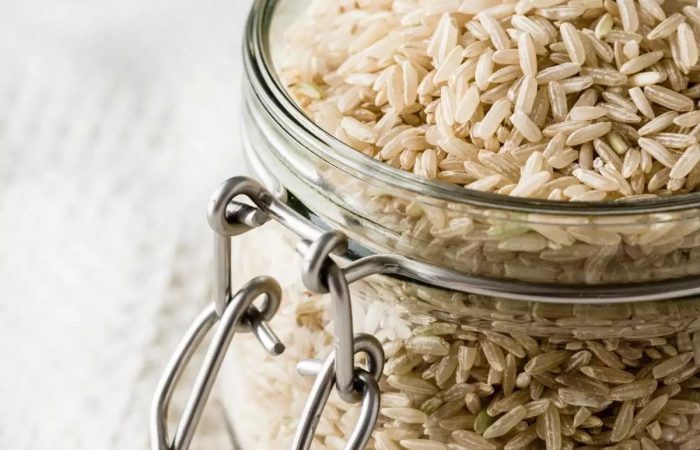

We are very familiar with the hard rice grain when uncooked. Something hard like that does not let us worry a lot about how we store it, in comparison to how we would store something fragile or soft like a cake. But even with it’s almost indestructible looks, they do need to be stored properly if storing for a long period.
Rice has become sort of a comfort food for us. It packs a lot of muscle in terms of nutrition and energy. But most importantly, it is a far healthier choice than the foods that come out of ready-to-eat boxes and fast-food joints. Not only do we value our rice, for it has been ours and our forefather’s staple food for lifetimes, but also rice can be a delicious meal or even a living habitat for many living organisms. Let us now look at some of the ways we can safeguard our rice.
We as Asians, know very well that many of our meals would contain rice, therefore it is not only very economical but also hassle-free to purchase rice in large quantities. Those of you who have been brought up in the West would have seen packs of sub 500 grams. But quantities like that could almost be a meme material for Asians. It is far common to buy 5 kg rice bags or even 25 kg bags (big family). Most types of rice can be stored for a long time in the shelf. The only challenge then is to keep them free of dust and contaminants and to safeguard them from pests. Exactly how long can we expect our uncooked rice to survive? Depends on the type. White rice like Jasmine and Basmati rice have an indefinite shelf life, when stored right. But some rice like Brown rice that are rich in oil content would have a shorter shelf life.
The ideal storing scenarios would be in an ambient and cool dry area. Rice is actually not typically sensitive to containers of plastic, glass or steel. It is better to place them in an airtight container. Cleaning and sanitizing the containers would be a must. If stored in an unclean container, rice could absorb some of its dirt and smell over time. Why?. Because rice absorbs as much oxygen as it can when stored in an air tight container. Do you wish to retain the quality flavor that it is supposed to?
Now let’s talk about Brown rice. In recent times, it has gained a lot more popularity since it has higher nutritional values. The barn and germ are still attached. They contain oils full of good, unsaturated fats. This makes it more nutritious than white rice alongside being extra nutty and flavorful. This can be a double-edged sword though. Great nutrition and taste from the oils but the oils can unfortunately go rancid in a short time. Brown rice thus need extra care.
What then is a better way to store brown rice and to avoid it from going rancid?. Consider the following:
Perfect quantity:
Since storing is the issue, there would not be a need to store brown rice for long if they get consumed quickly. Thus, it would be wise to say brown rice should be bought in quantities enough for a short time. This also means for each family the perfect quantity varies. For a large family, buying just a kg of rice would cause inconvenience by increasing the trips to the store.
Ideal environment:
Brown rice would be happy to call a cool, dark space preferably an airtight container it’s home. It can remain good for six to nine months in ideal conditions.
Perfect container:
The rice should be stored in an airtight container no matter if it’s a glass jar or a plastic container. Make sure to lid it tight. The reason for brown rice to deteriorate and spoil is because the oil is exposed to oxygen.
While we have discussed the essential storage advice, there is one more crucial aspect we must safeguard our priceless grain from—the creepy crawly invaders!
Yes, we occasionally discover a strange cockroach or other creature invading our kitchen cabinets. Weevils, which love to reproduce in rice grains and eventually render them inedible by emptying the inner rice grain, make rice a favorite food not just among humans but also among other creatures.
Fortunately, there are a few strategies to keep these insects from damaging rice:
Freeze it!
For 4-5 days, store your rice in the freezer. The current insects, such as the weevil, that may have recently begun attacking your grains will be killed by this method. Additionally, this approach will stop any insect eggs from hatching.
Cover it!
Storing rice in plastic bags with a zipper or a seal is one of the greatest ways to keep insects away. You might not be able to store a considerable quantity of rice in your freezer if it needs to be protected from insects and kept. Put the rice in airtight plastic bags to prevent insects in this situation.
Separate it!
If the insects have already gotten into your rice, throw out the entire stock. Separate them using the “divide and rule” principle! When the rice is being prepared for cooking, rinse it. These weevils will float naturally and you can just drain them away before adding water to boil the rice.
They can also be placed on a sizable tray and left outside in the sun for about three to four hours. The rice tray will be pest-free since they will want to go because of the heat. Put portions that you believe are acceptable in airtight plastic bags. You might add a few dried red chilies to it as an added precaution. Chilies have a strong aroma that repels pests.
We rice enthusiasts must give our favorite grain the utmost attention. And make sure we get to appreciate every grain we bought and enjoy it. One simply needs to make sure we only buy what we need and don’t simply overbuy when we notice a “special offer” bargains sign in the grocery store. We should store it properly and routinely check and clean our kitchen cabinets.

